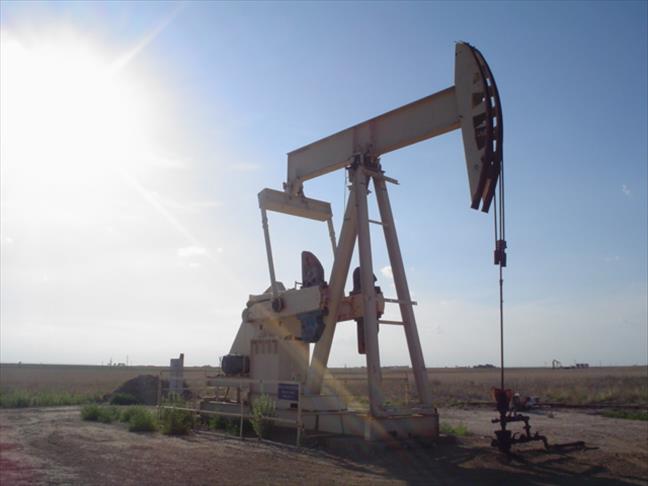
By Alex Pashley
LIMA, Peru
The plunging price of crude oil will spurPeru’s oil-importing economy, though curb its bid to become a net exporter as exploration dries up, analysts have said Thursday.
Oil prices have fallen almost 60 percent since June, as a shale boom swept the United States to the world’s number one producer, while OPEC members kept taps running.
“It’s having a positive effect on the Peruvian economy as we’re importers of crude,” said Beatriz Merino, president of the Peruvian Hydrocarbon Society, a lobby group of 16 oil firms.
“Our trade balance for oil will improve as we pay less, and the same for consumers with diesel and gasoline,” Merino added.
The Andean country spent $3.4 billion in 2013 on imported oil – mainly from neighboring Ecuador – though further price falls could halve that by 2016, she said.
“That will go some way to make up for the parallel slowdown in Chinese growth to trend rates of more like 7 percent, down from 9 percent,” Nicholas Watson of political risk firm, Teneo Intelligence, said. “The overall balance is positive.”
Peru’s once red-hot economy expanded just 2.7 percent in 2014, half the pace of the previous year, as slumped copper exports to China damped growth.
Cheaper inputs for its industry would boost consumption and lower inflation to raise growth, Watson added.
But lower prices signaled a slowdown in the exploration of the country’s untapped deposits as companies held off investment.
“Exploration that’s already quite weak is going to become even weaker,” according to Alvaro Rios, managing partner at Bolivia-based Gas Energy Latin America.
“Peru doesn’t have favorable geological conditions. It’s not Venezuela or Argentina,” Rios added, making reference to countries with some of the largest proven oil and natural gas reserves in the world.
Peru is the eighth largest crude oil reserve holder in Central and Latin America, with 633 million barrels of proven reserves as of January 2014, based on figures by the U.S. Energy Information Administration.
The majority of those reserves lie in the remote Amazonian region where extraction is costly.
Exploration at two major crude deposits in the north operated by Anglo-French firm Perenco and Canadian Gran Tierra, respectively, would be cut back, as prıces dropped below the $80 to $100 level needed to make operations financially viable, Rios added.
That signaled the $500 million spent on investment and exploration in 2014, according to official statistics, was likely to fall.
Perenco had “very complex operating conditions,” having to dilute its heavy crude with materials shipped 1,100 mıles (1,800 kilometers) by river from Manaus in Brazil to produce it at $40 or $50 a barrel, saıd Cesar Gutierrez, director of Utilities Peru. Pluspetrol Peru’s production in the Andoas and Maynas oil lots in the Amazonian region of Loreto had a $40 cost, Gutierrez added.
Though in addition to reducing the state’s tax take and royalties paid out to regional authorities, sagging crude prices put at risk the modernization of Peru’s top oil refinery.
The $3.5 billion upgrade of the part-state owned Talara refinery on the north Pacific coast is a core piece of President Ollanta Humala’s energy strategy.
Lower prices could hamper the refinery’s plan to hit a profit margin needed to recoup its investment. The margin is the differential between the price of crude oil and the petroleum products extracted from it.
Crimped volumes on reduced production would make the refinery struggle to pay it back within the estimated 20 to 30 years, Emilio Zuñiga of Lima-based Latin Pacific Capital said.
“If you take the investment they’ve made and divide it between the barrels, the margin you need to repay the refinery [upgrade] is more than double the international refining margin," he said.
The upgrade was financially viable and unaffected by the oil price, the former president of state oil company Petroperu, Humberto Campodonico, wrote in Lima daily El Comercio on Jan 8.
State oil company, Petroperu has a $2.7 billion stake in the refinery, with the rest owned by Spain’s Repsol.
But as traders placed bets on oil futures falling to $20 a barrel, the outlook for sustained low prices this year left a “high possibility” the upgrade would be delayed beyond its 2017 completion date, Teneo Intelligence’s Watson said.
That would deal a further blow to Peru’s move toward self-sufficiency in the medium term.
Petroperu is due to float 49 percent of its stock this year as it views to modernize itself following the example of Brazil’s Petrobras or Colombia’s Ecopetrol. Respective privatizations in 2010 and 2007 subsequently boosted stock market values and profits.
The initial public offering helps Petroperu keep up with its rising energy demand and access capital markets.
Peru produced 69,000 barrels a day according to latest figures last November. In the 1980s, production peaked at 195,000 barrels a day, while the government now targets 100,000 a day within five to 10 years.
Brent crude, an oil benchmark, gained 6 cents to close at $48.75 in London trading Thursday.
Anadolu Agency website contains only a portion of the news stories offered to subscribers in the AA News Broadcasting System (HAS), and in summarized form. Please contact us for subscription options.




